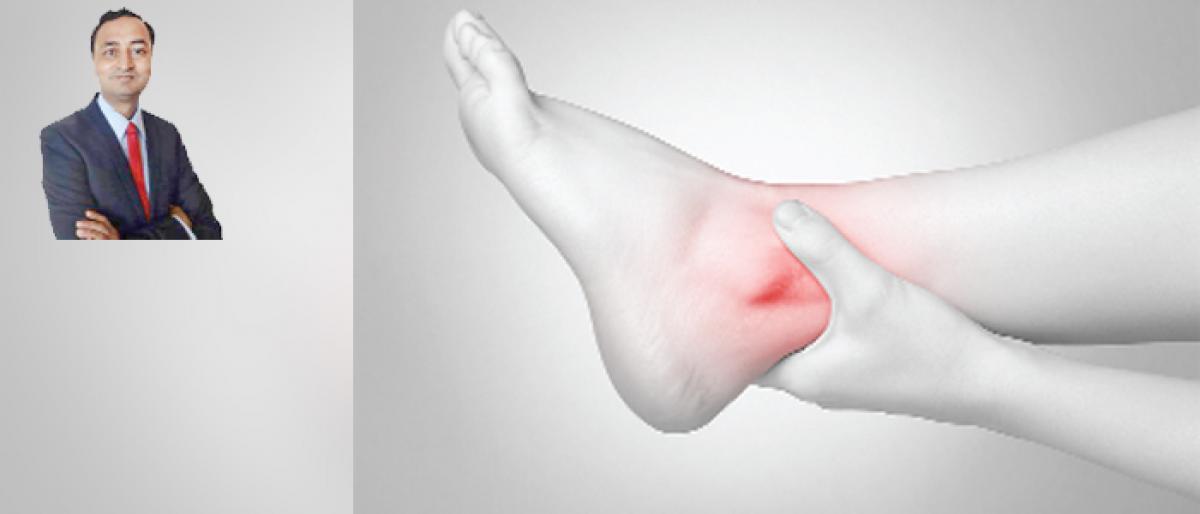Foot and ankle injuries keep players out of the game

Health is one of the major concerns for sportspersons who are most of the times prone to injuries Due to the repetitive pounding of the game, players must endure to its brunt
Health is one of the major concerns for sportspersons who are most of the times prone to injuries. Due to the repetitive pounding of the game, players must endure to its brunt.
The most common injuries are related to the foot and ankle, and the condition may take a longer time to recover as well.
Heel pain: If players undergo training without proper warm-up may be one of the reasons. This is the most common and the severest form of pain, any sportsperson may face
Plantar Fasciitis: It is acute pain in the thick tissue at the bottom of the foot that connects the heel bone and the toes occur when this tissue becomes swollen or inflamed.
Ignoring this pain may result in chronic heel pain and can also change the way of walking. Also, people with very flat feet or very high arches are more prone to plantar fasciitis.
If a person has a flat foot or weak and misaligned first toe, the pain is almost sure to occur.
Achilles Tendonitis: Achilles is the large tendon connecting the two calf muscles with the back of the heel bone.
Heavy pain is felt in the heel when this tendon is ruptured and can lead to ankle pain as well. This may be caused due to overuse, excessive running without warm up.
Shin Pain: It happens in the front and inner aspect of the shin due to an imbalance between the calf muscles and the muscles in the front leg and can cause calf pain.
Stress fracture: It is a tiny incomplete crack in the surface of bone found usually in the lower leg of the foot.
It is caused when there is a sudden increase in the volume of training. Stress fractures can be present in any of the bones comprising the foot, but fractures occur most typically in the metatarsals.
What should be done to relieve pain?
Consult a knee, foot and ankle surgeon immediately if any of the above symptoms persist after 1 – 2 weeks of rest along with basic ice treatment.
You may require further investigations like blood tests and X-rays. Blood tests may show low haemoglobin, iron levels or vitamin D3 levels. X-rays may show stress fractures of the metatarsals or the leg bone.
If the X-rays are normal and pain persists, MRI may be required to assess the extent of the damage.
Medications: If your condition has developed recently, anti-inflammatory/ analgesic medication, coupled with heel pads may be all that is necessary to relieve pain and reduce inflammation.
Stress fractures will require rest, analgesics and supportive treatment like a plaster or a walker boot for 4 – 6 weeks.
Surgical treatment: Sometimes, if the pain is not relieved by non-surgical methods in athletes, surgery may be required for fixation of the stress fracture or knee keyhole surgery for knee pain.
Non-surgical treatment: Along with rest, ice and compression, medical treatment is required to correct and abnormal blood levels like low haemoglobin and vitamin-D levels.
Exercise and stretching: In the case of heel pain, stretching is the best treatment as it helps to keep weight off your foot until the initial inflammation goes away.
You can also apply ice to the sore area for 20-30 minutes several times a day to relieve your symptoms.
In case of the knee pain, hamstring stretches and stretching of other tight muscles is an important part of the treatment.
A supportive knee cap which reduces pressure on the kneecap may help.
(The writer is specialist in the knee, foot and ankle and sports medicine, Breach Candy Hospital)














